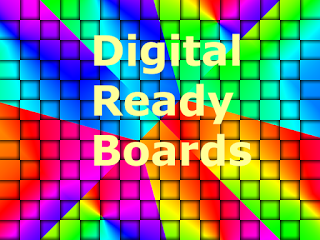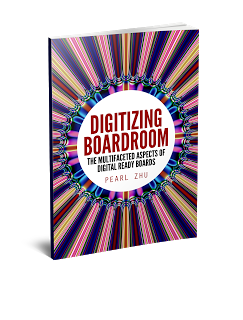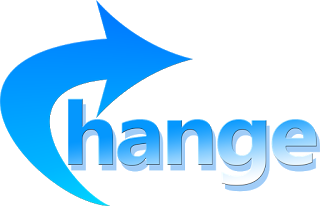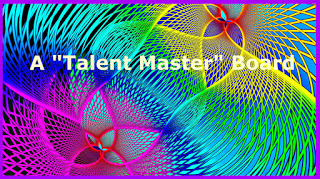Pearl Zhu's Blog, page 1301
September 1, 2016
“Digitizing Boardroom” Conclusion: Running a Digital Ready Board
 Due to the increasing velocity and variety of changes in the digital era, organizations today have to live up with the business dynamic which is uncertain, ambiguous, complex and flux. The board in a high-level leadership position plays a crucial role in business advising and monitoring, as well as setting key digital tones in organizational culture styles and leadership quintessential.
Due to the increasing velocity and variety of changes in the digital era, organizations today have to live up with the business dynamic which is uncertain, ambiguous, complex and flux. The board in a high-level leadership position plays a crucial role in business advising and monitoring, as well as setting key digital tones in organizational culture styles and leadership quintessential.
Digital mindsets: With increasing speed of change, it is in the BoD’s mindset to either adapt or embrace changes. It has been said that to embrace change requires a change of mindset at every level of the organization and an understanding that things cannot stay the same. Therefore, BoDs and top leadership teams make a significant influence on shaping the digital mindset of the organization, it requires that you move from fixed mind to growth mind, from static mind to agility mind, so that it allows the mind to seek possibility or to make impossible possible. As the say’s going,”the most expensive thing anyone can own is a closed mind.” BoDs with digital mindset can break down silo think and hierarchical style and drive as well as adapt to changes effortlessly.
The composition of digital Board: The best fit for the board depends on the Board’s current makeup and culture and which “gap” needs to be filled. The Board is responsible for ensuring an appropriate mix of skills, knowledge and experience are present or available for it to fulfill its function. So the Board composition needs to embrace both cognitive difference, functional difference, and other experience/capability difference. Whereas what interested in BoD is mindfulness. Appreciates that the value of alternative perspective and insights which say nothing of not trusting, simply looking from a different stance, and asking different questions. The important issue is how the Board accommodate diverse opinions and assess them and converge the diverse thought into wise decisions all BoDs support.
 The outlier’s view from digital BoDs: The Board provides an “outside-in” view of businesses and multi-dimensional lenses to oversee and advise business strategy and execution and steer business toward the right direction. The most important function of any Board is the oversight of a holistic company strategy and execution through focused leadership, monitor its implementation and results, amend wherever necessary to match changing marketplace conditions, and by doing so to ensure the long term prosperity of the business, also oversee the management of risks to the reputation, viability and profitability of the enterprise.
The outlier’s view from digital BoDs: The Board provides an “outside-in” view of businesses and multi-dimensional lenses to oversee and advise business strategy and execution and steer business toward the right direction. The most important function of any Board is the oversight of a holistic company strategy and execution through focused leadership, monitor its implementation and results, amend wherever necessary to match changing marketplace conditions, and by doing so to ensure the long term prosperity of the business, also oversee the management of risks to the reputation, viability and profitability of the enterprise.Evaluation, analysis and strategic planning for long term should top the list in the digital board’s agenda. A digital-ready board has the advantage of pulling enough resources and pushing the busienss model of technology, trustworthiness, prepare and launch change, innovation, and mastering with digital fluency to make profound leadership influence. Follow us at: @Pearl_Zhu
Published on September 01, 2016 23:19
Three Digital Balances for Running Transformational IT
 With increasing speed of changes and continuous digital disruptions, IT is facing both challenges and opportunities. Should IT just follow the controlling mentality to “always do things like this,” and “keeps the lights on”; or should IT reinvent itself to explore the new possibilities? Whether it's a challenge or an opportunity depends on how fluent IT manages digital transformation, and strikes the right balance of varying IT perspectives in running a transformational IT steadfastly.
With increasing speed of changes and continuous digital disruptions, IT is facing both challenges and opportunities. Should IT just follow the controlling mentality to “always do things like this,” and “keeps the lights on”; or should IT reinvent itself to explore the new possibilities? Whether it's a challenge or an opportunity depends on how fluent IT manages digital transformation, and strikes the right balance of varying IT perspectives in running a transformational IT steadfastly.
IT needs to achieve both transactional efficiency and transformative agility: As many organizations are at an inflection point in digital transformation, they have the strike the right balance between “keeping the lights on,” fixing customers’ problems, as well as focus on strategic implementation and optimizing business capabilities. “Transactional" refers to operational transactions, taking an input at one end and churning it out at the other with processes in between. "Transformational" means redesigning existing transactions to something new, being innovative/ creative and also introducing completely new transactions hopefully with a strategy that serves the organization well. Undertaking real transformational change requires leadership, know-how, and confidence. The transformation-driven, effective CIOs can help to orchestrate such change in organizational structure (vertical), working structure (horizontal) and social structure through the latest digital technology. A transformation IT leaders need also to be a tactical manager to take care of the bottom line. Your vision can be excellent, but without the atmosphere of listening, the vision will fall on deaf ears. Thus, it doesn't mean transformational CIOs are superior to transactional CIOs in every perspective, and both attributes - transactional and transformative - are needed in a CIO to be effective and efficient.
It is impossible to decouple strategic value and operational success of IT: The perception of strategic IT is based on both operational success, whether the reports are produced on time, the projects running on budget and on schedule, and longer-term strategic considerations, such as business initiative delivery and the stewardship of the organization's assets and resources. These are like the two sides of the same coin. It is crucial to delivering the mundane to accomplish the strategic vision. Unfortunately, it's nearly impossible to decouple the two, until you are viewed as being capable of managing the day-to-day you won't have the opportunity to talk about the longer-term. You do have to win the daily battles to win the larger strategic victories. CIOs need to take responsibility for demonstrating the competence of their team, with ability to achieve operational excellence, as well as pursuing strategic value of IT.
 Balance “invisible” and visible myth of IT: The optimal way for IT to help win new business and improve customer experience is to make most of IT and technology "invisible" to the customer. In other words, hide the complexity of IT/technology infrastructure, operations, and shift the “bits and bytes” talk to strategic conversation about business insight and foresight. What is left visible to the customer should be simple, intuitive, secure, reliable and predictable. This requires a cross-functional customer-centric paradigm for managing and transforming IT from inside- out operation-driven, to outside-in customer centric. Also keeping relative transparency is a major part of customer influence, the ‘visible’ commitment of the whole corporate body behind those deliverable.
Balance “invisible” and visible myth of IT: The optimal way for IT to help win new business and improve customer experience is to make most of IT and technology "invisible" to the customer. In other words, hide the complexity of IT/technology infrastructure, operations, and shift the “bits and bytes” talk to strategic conversation about business insight and foresight. What is left visible to the customer should be simple, intuitive, secure, reliable and predictable. This requires a cross-functional customer-centric paradigm for managing and transforming IT from inside- out operation-driven, to outside-in customer centric. Also keeping relative transparency is a major part of customer influence, the ‘visible’ commitment of the whole corporate body behind those deliverable.
Running transformational IT means IT has to reimagine & renovate itself all the time, to discover the better solutions to either old or new problems. Perspective is always in the eyes of the beholder: Business and IT need to focus more on being objective in approaches and allow for the ever changing markets and environment. This requires a mind shift to allow for this change and allow for the element of ultimate control to be released in order for the change to take affect. The difficult part to be a great leader is the balance of short term and long term business perspective, visible and invisible sides of IT complexity, and transactional efficiency and transformational agility.
Follow us at: @Pearl_Zhu
Published on September 01, 2016 23:15
August 31, 2016
The Monthly Insight: Change Management in Digital Transformation Aug. 2016
 Change is inevitable, organizational change has become a common practice within an organization, but too often changes are made as a reaction to outer impulses, crisis, and demands. This is the bureaucracy’s way of meeting the challenges. People, process, technology, WHAT are important factors in Change Management, and pitfalls to avoid, in order to improve the success rate of change initiatives? Change Management in Digital Transformation Can Change Management be a Strategic Process?: Change is the only constant now, and even the speed of change is accelerating. Thus, the change should be part of a company’s culture and should be stimulated by the top management, it is resulting in a flexible and dynamic organization able to adapt to new and unexpected situations and market demands. In doing so, can change management be a strategic process?
Change is inevitable, organizational change has become a common practice within an organization, but too often changes are made as a reaction to outer impulses, crisis, and demands. This is the bureaucracy’s way of meeting the challenges. People, process, technology, WHAT are important factors in Change Management, and pitfalls to avoid, in order to improve the success rate of change initiatives? Change Management in Digital Transformation Can Change Management be a Strategic Process?: Change is the only constant now, and even the speed of change is accelerating. Thus, the change should be part of a company’s culture and should be stimulated by the top management, it is resulting in a flexible and dynamic organization able to adapt to new and unexpected situations and market demands. In doing so, can change management be a strategic process?
Driving Change and Leap Digital Transformation in a Systematic Way? Organizations large or small are on their digital transformation journey, although there is no one size fits all solution to ensure success, but what’re the principles or logic steps they shall follow in managing such transformation in a more systematic way?
Change Management in Digital Transformation? Almost all of the forward-thinking organizations are at the journey of digital transformation. Digital means the increasing speed of changes, hyperconnectivity, and always-on businesses. And digital transformation is the leapfrogging from the accumulated changes, so how to manage changes more effectively? Anyone repeating the 70% failure rate for change programs should immediately arouse some suspicion. This would indicate that for nearly 20 years managers have been condoning and embarking on something which is known to fail 70% of the time. Would we really have accepted such incompetence over such a long period?
Change as an Ongoing Capability: Change is a volatile subject, just like change itself. Everything changes continuously by following the laws of evolution, and the rate of change is accelerated. Corporate change can be a simple modification of strategy, a business process improvement or a more radical digital transformation. Either at the individual or organizational level, at the more static industrial era, change is a one-time project; at digital age, change has to become an ongoing capability?
 Doing the Wrong Things Differently Isn't Transformation? Organizations large or small are at the journey of digital transformation. However, statistically, more than two-thirds of these programs fail to achieve the expectation. What are the root causes? Do you agree: Doing the wrong things differently isn’t transformation. That is the importance of good transformation practice within a motivated change culture oriented to the right work for the right reasons. But what are the logical steps to follow during the transformation to ensure you are doing the right things, before doing things right, also improve organizational maturity from efficiency to effectiveness to agility?
Doing the Wrong Things Differently Isn't Transformation? Organizations large or small are at the journey of digital transformation. However, statistically, more than two-thirds of these programs fail to achieve the expectation. What are the root causes? Do you agree: Doing the wrong things differently isn’t transformation. That is the importance of good transformation practice within a motivated change culture oriented to the right work for the right reasons. But what are the logical steps to follow during the transformation to ensure you are doing the right things, before doing things right, also improve organizational maturity from efficiency to effectiveness to agility?Blogging is not about writing, but about thinking; it’s not just about WHAT to say, but about WHY to say, and HOW to say it. It reflects the color and shade of your thought patterns, and it indicates the peaks and curves of your thinking waves. Unlike pure entertainment, quality and professional content takes time for digesting, contemplation and engaging, and therefore, it takes the time to attract the "hungry minds" and the "deep souls." It’s the journey to amplify your voice, deepen your digital footprints, and match your way for human progression.Follow us at: @Pearl_Zhu
Published on August 31, 2016 23:08
The “Digitizing Boardroom - The Multidimensional Aspects of Digital Ready Boards ” Book Chapter 8 A Culture Savvy Board Introduction
Boards play a significant role in making good policies and setting digital principles for tuning a high performing culture to lead successful strategy execution.
 Organizations large or small are on the journey of digital transformation, strategy making is important, strategy implementation is challenging, and one of the most critical business success factors is organizational culture, which is invisible, but powerful to fail a good strategy. In order to drive a successful digital transformation, how can BoDs set the digital tones in building “Digital-Ready” cultures, and how can they fine tune policies for building high-innovative and high engaging digital workforce, and encouraging digital professionals to bring wisdom to the workplace?
Organizations large or small are on the journey of digital transformation, strategy making is important, strategy implementation is challenging, and one of the most critical business success factors is organizational culture, which is invisible, but powerful to fail a good strategy. In order to drive a successful digital transformation, how can BoDs set the digital tones in building “Digital-Ready” cultures, and how can they fine tune policies for building high-innovative and high engaging digital workforce, and encouraging digital professionals to bring wisdom to the workplace?
A healthy and productive culture is both the cause and result of enterprise success: As culture has much to do with how a group of people thinks and how they contribute and make a difference. If BoDs and Executive Management teams have an open, inclusive, and innovative culture, they also clearly define the strategy of the enterprise and align organizational behaviors toward achieving goals derived from the mission, a healthy and productive culture will be built up. If Boards and management do a good job of defining strategies, goals, and objectives, exemplify and oversee the culture, and successfully align resources toward achieving them, the business culture will take care of itself. A healthy and productive culture is both the cause and result of enterprise success.
The correlation between positive workplace culture and policy: Organizations are transforming from industrial silos to more holistic digital business, but a positive workplace culture is not less important, but more critical. Because culture as a collective mindset and habit is the competency to decide the business’s long-term success. The board as one of the most influential policy makers has to figure out the correlation between positive workplace culture and policy: Could culture be the very reason for the proliferation of policies, or, can a positive workplace culture reduce the number of policies required to manage employees? To maintain the positive environment, a set of guiding principles, grounding rules and policies is important to shape the positive culture. However, the overly restrictive policies will lead to micromanagement or too much control which leads to business bureaucracy and ineffectiveness. Good leaders develop an insight with determining those who work better under the detailed guidance and those who work better given broader goals and support.
 Culture is often the #1 root cause to fail strategy: Organizations rise and fall, not on the quantum of plans and resources, but on the capabilities to manage, lead, yet most importantly to execute. In many organizations, more than 70% strategy execution fail to achieve expected results, and culture is often the root cause of such failure. It is about many different matters like resistance to change, silo thinking, or poor communication, etc. Culture should begin from the senior management and board level, and then, it will be followed by others from top-down. In all the conversations about culture, keep in mind that it is the policies, procedures, rewards and retributions that drive behavior and it is the employee behavior that expresses “culture.” Hence, Boards play a significant role in making good policies and setting digital principles for building a high performing culture to lead successful strategy execution.
Culture is often the #1 root cause to fail strategy: Organizations rise and fall, not on the quantum of plans and resources, but on the capabilities to manage, lead, yet most importantly to execute. In many organizations, more than 70% strategy execution fail to achieve expected results, and culture is often the root cause of such failure. It is about many different matters like resistance to change, silo thinking, or poor communication, etc. Culture should begin from the senior management and board level, and then, it will be followed by others from top-down. In all the conversations about culture, keep in mind that it is the policies, procedures, rewards and retributions that drive behavior and it is the employee behavior that expresses “culture.” Hence, Boards play a significant role in making good policies and setting digital principles for building a high performing culture to lead successful strategy execution.
It is a continuously changing world, and no organization can afford to stick to its old ways of doing things. Increasing competition also demands some cultural changes where rigid practices may have to give way to flexibility in the manner of carrying out businesses. Truly speaking, one of the most important, yet open secrets, of many successful organizations is to nurture an “adaptability trait” in an organization’s culture. The spirit of organizations comes from the top. Not only walk the talk, leaders, believing in the effects and high value of a company culture, need a lot of adaptability, to follow their road map continuously.
"Digitizing Boardroom" Book Chapter 8 A Culture Savvy Board Introduction
"Digitizing Boardroom" Book Chapter 7 A "Talent Master" Board Introduction
"Digitizing Boardroom" Book Chapter 6 A "Governance Champion" Board Introduction
"Digitizing Boardroom" Book Chapter 5 An IT-Friendly Board Introduction
"Digitizing Boardroom" Book Chapter 4 An Innovative Board Introduction
"Digitizing Boardroom" Book Chapter 3 A Performance-driven Board Introduction
"Digitizing Boardroom" Book Chapter 2 A Strategic Board Introduction
"Digitizing Boardroom" Book Chapter 1 23 Themes of Digital Boardrooms Introduction"Digitizing Boardroom" Book Preview
"Digitizing Boardroom" Book Introduction, Slideshare PresentationFollow us at: @Pearl_Zhu
 Organizations large or small are on the journey of digital transformation, strategy making is important, strategy implementation is challenging, and one of the most critical business success factors is organizational culture, which is invisible, but powerful to fail a good strategy. In order to drive a successful digital transformation, how can BoDs set the digital tones in building “Digital-Ready” cultures, and how can they fine tune policies for building high-innovative and high engaging digital workforce, and encouraging digital professionals to bring wisdom to the workplace?
Organizations large or small are on the journey of digital transformation, strategy making is important, strategy implementation is challenging, and one of the most critical business success factors is organizational culture, which is invisible, but powerful to fail a good strategy. In order to drive a successful digital transformation, how can BoDs set the digital tones in building “Digital-Ready” cultures, and how can they fine tune policies for building high-innovative and high engaging digital workforce, and encouraging digital professionals to bring wisdom to the workplace?
A healthy and productive culture is both the cause and result of enterprise success: As culture has much to do with how a group of people thinks and how they contribute and make a difference. If BoDs and Executive Management teams have an open, inclusive, and innovative culture, they also clearly define the strategy of the enterprise and align organizational behaviors toward achieving goals derived from the mission, a healthy and productive culture will be built up. If Boards and management do a good job of defining strategies, goals, and objectives, exemplify and oversee the culture, and successfully align resources toward achieving them, the business culture will take care of itself. A healthy and productive culture is both the cause and result of enterprise success.
The correlation between positive workplace culture and policy: Organizations are transforming from industrial silos to more holistic digital business, but a positive workplace culture is not less important, but more critical. Because culture as a collective mindset and habit is the competency to decide the business’s long-term success. The board as one of the most influential policy makers has to figure out the correlation between positive workplace culture and policy: Could culture be the very reason for the proliferation of policies, or, can a positive workplace culture reduce the number of policies required to manage employees? To maintain the positive environment, a set of guiding principles, grounding rules and policies is important to shape the positive culture. However, the overly restrictive policies will lead to micromanagement or too much control which leads to business bureaucracy and ineffectiveness. Good leaders develop an insight with determining those who work better under the detailed guidance and those who work better given broader goals and support.
 Culture is often the #1 root cause to fail strategy: Organizations rise and fall, not on the quantum of plans and resources, but on the capabilities to manage, lead, yet most importantly to execute. In many organizations, more than 70% strategy execution fail to achieve expected results, and culture is often the root cause of such failure. It is about many different matters like resistance to change, silo thinking, or poor communication, etc. Culture should begin from the senior management and board level, and then, it will be followed by others from top-down. In all the conversations about culture, keep in mind that it is the policies, procedures, rewards and retributions that drive behavior and it is the employee behavior that expresses “culture.” Hence, Boards play a significant role in making good policies and setting digital principles for building a high performing culture to lead successful strategy execution.
Culture is often the #1 root cause to fail strategy: Organizations rise and fall, not on the quantum of plans and resources, but on the capabilities to manage, lead, yet most importantly to execute. In many organizations, more than 70% strategy execution fail to achieve expected results, and culture is often the root cause of such failure. It is about many different matters like resistance to change, silo thinking, or poor communication, etc. Culture should begin from the senior management and board level, and then, it will be followed by others from top-down. In all the conversations about culture, keep in mind that it is the policies, procedures, rewards and retributions that drive behavior and it is the employee behavior that expresses “culture.” Hence, Boards play a significant role in making good policies and setting digital principles for building a high performing culture to lead successful strategy execution. It is a continuously changing world, and no organization can afford to stick to its old ways of doing things. Increasing competition also demands some cultural changes where rigid practices may have to give way to flexibility in the manner of carrying out businesses. Truly speaking, one of the most important, yet open secrets, of many successful organizations is to nurture an “adaptability trait” in an organization’s culture. The spirit of organizations comes from the top. Not only walk the talk, leaders, believing in the effects and high value of a company culture, need a lot of adaptability, to follow their road map continuously.
"Digitizing Boardroom" Book Chapter 8 A Culture Savvy Board Introduction
"Digitizing Boardroom" Book Chapter 7 A "Talent Master" Board Introduction
"Digitizing Boardroom" Book Chapter 6 A "Governance Champion" Board Introduction
"Digitizing Boardroom" Book Chapter 5 An IT-Friendly Board Introduction
"Digitizing Boardroom" Book Chapter 4 An Innovative Board Introduction
"Digitizing Boardroom" Book Chapter 3 A Performance-driven Board Introduction
"Digitizing Boardroom" Book Chapter 2 A Strategic Board Introduction
"Digitizing Boardroom" Book Chapter 1 23 Themes of Digital Boardrooms Introduction"Digitizing Boardroom" Book Preview
"Digitizing Boardroom" Book Introduction, Slideshare PresentationFollow us at: @Pearl_Zhu
Published on August 31, 2016 23:04
The “Digitizing Boardroom - The Multidimensional Aspects of Digital Ready Boards ” Book Chapter 8 Introduction
 Organizations large or small are on the journey of digital transformation, strategy making is important, strategy implementation is challenging, and one of the most critical business success factors is organizational culture, which is invisible, but powerful to fail a good strategy. In order to drive a successful digital transformation, how can BoDs set the digital tones in building “Digital-Ready” cultures, and how can they make good policies for building high-innovative and high engaging digital workforce?
Organizations large or small are on the journey of digital transformation, strategy making is important, strategy implementation is challenging, and one of the most critical business success factors is organizational culture, which is invisible, but powerful to fail a good strategy. In order to drive a successful digital transformation, how can BoDs set the digital tones in building “Digital-Ready” cultures, and how can they make good policies for building high-innovative and high engaging digital workforce?
A healthy and productive culture is both the cause and result of enterprise success: As culture has much to do with how a group of people feels about and how they contribute and make a difference. If BoDs and Executive Management teams have an open, inclusive, and innovative culture, they also clearly define the strategy of the enterprise and align organizational behaviors toward achieving goals derived from the mission, a healthy and productive culture will be built up. If Boards and management do a good job of defining strategies, missions, and objectives, exemplify and oversee the culture, and successfully align resources toward achieving them, the business culture will take care of itself. \
The correlation between positive workplace culture and policy: Organizations are transforming from industrial silos to more holistic digital business, but a positive workplace culture is not less important, but more critical. Because culture as a collective mindset and habit, is the competency to decide the business’s long-term success. The board as one of the most influential policy makers has to figure out the correlation between positive workplace culture and policy: Could culture be the very reason for the proliferation of policies, or, can a positive workplace culture reduce the number of policies required to manage employees? To maintain the positive environment, a set of guiding principles and grounding rules and policies is important to shape the positive culture. However, the overly restrictive policies will lead to micromanagement or too much controlling which leads to business bureaucracy and ineffectiveness. Good leaders develop an insight with determining those who work better under the detailed guidance and those who work better given broader goals and support.
 Culture is often the #1 root cause to fail strategy: Organizations rise and fall, not on the quantum of plans and resources, but on the capabilities to manage, lead, yet most importantly to execute. In many organizations, more than 70% strategy execution fail to achieve expected results, and culture is often the root cause to such failure. It is about many different matters like resistance to change, silo thinking, or poor communication, etc. Culture should begin from the senior management and board level, and then, it will be followed by others. In all the conversations about culture, keep in mind that it is the policies, procedures, rewards and retributions that drive behavior and it is the employee behavior that expresses “culture.” Hence, Boards play significant role in making good policies and setting digital principles for build a high performing culture to lead successful strategy execution.
Culture is often the #1 root cause to fail strategy: Organizations rise and fall, not on the quantum of plans and resources, but on the capabilities to manage, lead, yet most importantly to execute. In many organizations, more than 70% strategy execution fail to achieve expected results, and culture is often the root cause to such failure. It is about many different matters like resistance to change, silo thinking, or poor communication, etc. Culture should begin from the senior management and board level, and then, it will be followed by others. In all the conversations about culture, keep in mind that it is the policies, procedures, rewards and retributions that drive behavior and it is the employee behavior that expresses “culture.” Hence, Boards play significant role in making good policies and setting digital principles for build a high performing culture to lead successful strategy execution. It is a continuously changing world, and no organization can afford to stick to its old ways of doing things. Increasing competition also demands some cultural changes where rigid practices may have to give way to flexibility in the manner of carrying out businesses. Truly speaking, one of the most important, yet open secrets, of many successful organizations is to nurture an “adaptability trait” in an organization’s culture. The spirit of organizations comes from the top. Not only walk the talk, leaders, believing in the effects and high value of a company culture, need a lot of adaptability, to follow their roadmap continuously.Follow us at: @Pearl_Zhu
Published on August 31, 2016 23:04
“CIO Master” Book Tuning: Three Aspects in Running a Strategic IT
 The majority of IT organizations get stuck in the lower level of maturity, to “keep the lights on,” and be transactional and operation driven. Therefore, business partners still think IT as a support center and help desk organization. To transform IT into a value creator and improve its effectiveness, IT needs to become strategic and innovative. More broadly speaking, IT is about distributing and sharing information on the scale, and provide strategic insight and multidimensional values to the business, which include a seamless customer experience, an optimal business service, a commercial value proposition, or a social system which deals with and provides context for varying interest and need. But HOW can IT become more strategic?
The majority of IT organizations get stuck in the lower level of maturity, to “keep the lights on,” and be transactional and operation driven. Therefore, business partners still think IT as a support center and help desk organization. To transform IT into a value creator and improve its effectiveness, IT needs to become strategic and innovative. More broadly speaking, IT is about distributing and sharing information on the scale, and provide strategic insight and multidimensional values to the business, which include a seamless customer experience, an optimal business service, a commercial value proposition, or a social system which deals with and provides context for varying interest and need. But HOW can IT become more strategic?
How does IT become strategic? IT is impacting every business unit and is becoming the driver of business change. The good strategy and forward planning are paramount to make IT striking the right balance between long term perspective and short term problem fixing. As organizations that do not respond to external environmental changes will quickly outcompete as more innovative enterprises take their customers. IT can keep business areas up to date with the opportunities emerging technology provides. Businesses are looking for IT to add new innovative methods for business optimization, business transformation, improving quality, agile construction etc. Foster an innovation culture to create innovative IT-enabled business models and business capabilities through a combination of existing and emerging technologies. Deliver the innovative capabilities to capture first-mover advantages.
How does IT deliver maximum value to businesses? The exponential growth of the “digital transformation” opportunities is creating new innovation opportunities for the business. The role of CIOs continues to evolve rapidly in the midst of the information or digital transformation and the accelerating changes in technology. CIOs must not preoccupy themselves with operational platforms and process improvements only, and they must have a higher level of influence on how businesses change. For CIOs to be invited into the boardroom, they need to speak to the business about the strategic imperative of organization. For that they need to be very aware of what top people have in mind on the strategies/tactics binary and give them all required information. The IT value itself is a multi-dimensional concept,Then, it comes analytics and metrics as a way of measuring the performance benefits of IT to business. Once this is done and the business understands the value of IT, IT can expect some sort of partnership with the business, where you have business folks coming up with further ideas on how they can benefit from IT. So the business starts seeing IT as an integral part of the business and not just as an enabler.
 How can IT maintain vigilance? With the vendors offering SAAS solutions that business can utilize directly with almost no IT support, IT should feel a competitive pressure. IT can no longer feel like it has a monopoly on delivering solutions to the business. IT should be more integration focused rather than re-inventing the wheel with most custom development that takes place; Understanding and having a visual representation of your IT/Business capacity will result in your ability to understand where your internal resources are being deployed. It can drive IT to run more like business as well as understand the business strategies more comprehensively. With this metric in place, you can then begin to decide which business units /departments/ stakeholders are receiving too much capacity, and which ones are not. More specifically, IT value to the business can be categorized in a number of ways, such as:- Improving Agility (Speed to Market, ability to change direction with the market, etc) - Increasing ing Revenue (enable the business to gain market share, enter new markets, etc) - Lowering Risk (reduces system downtime, create business continuity, etc) - Lowering Cost (reduces the cost of current business process, improve margins, freeing up capital)
How can IT maintain vigilance? With the vendors offering SAAS solutions that business can utilize directly with almost no IT support, IT should feel a competitive pressure. IT can no longer feel like it has a monopoly on delivering solutions to the business. IT should be more integration focused rather than re-inventing the wheel with most custom development that takes place; Understanding and having a visual representation of your IT/Business capacity will result in your ability to understand where your internal resources are being deployed. It can drive IT to run more like business as well as understand the business strategies more comprehensively. With this metric in place, you can then begin to decide which business units /departments/ stakeholders are receiving too much capacity, and which ones are not. More specifically, IT value to the business can be categorized in a number of ways, such as:- Improving Agility (Speed to Market, ability to change direction with the market, etc) - Increasing ing Revenue (enable the business to gain market share, enter new markets, etc) - Lowering Risk (reduces system downtime, create business continuity, etc) - Lowering Cost (reduces the cost of current business process, improve margins, freeing up capital)
Be proactive, be real, be innovative, be engaged, seek to engage others, Lead through example, be known as approachable, passionate, and above all truly care about the most valuable resource you have, your fellow employees, then IT can overcome numerous roadblocks on the way to become a strategic business partner.
Follow us at: @Pearl_Zhu
Published on August 31, 2016 23:01
August 30, 2016
The CIO’s Digital Agenda: Running a High-Mature IT Aug. 2016
 IT is the foundation of data, information, and modern knowledge. The biggest misnomer regarding IT is that it is "just technology." Digital is about the rapidly change and continuous business flow, and IT becomes a changing organization to driving business transformation. How to fine tune IT to become a change agent and get the business digital ready?
IT is the foundation of data, information, and modern knowledge. The biggest misnomer regarding IT is that it is "just technology." Digital is about the rapidly change and continuous business flow, and IT becomes a changing organization to driving business transformation. How to fine tune IT to become a change agent and get the business digital ready?
Running a High-Mature IT Three Aspects in IT Maturity? Most of IT organizations today still run in a reactive mode as an order taker to keep the bottom line and struggle with operational efficiency. However, with the rapidly change and overloading information, technology is often the disruptive force of business transformation. Forward-looking organizations have to empower their IT leaders to lead more proactively, contribute for strategy making, and focus on innovation. In philosophy and practice, how to improve IT maturity as a true strategic business partner?
Digital IT Maturity: Nowadays information is the lifeblood of the business technology is often the digital disruptor, and change is the very nature of Information Technology. The irony fact is that IT is often perceived to be too slow to adapt to the changes in the majority of large enterprise organizations, and some businesses even complain their IT organizations become the obstacle to getting things done. How to speed up IT- it means IT has to adapt to changes in proactive ways, and more often, IT has to drive the changes and plays a pivotal role in digital transformation, focus on the fastest speed available - because that is where the main threat to competitiveness. It is about running IT as a business enabler to catalyze growth and improve organizational agility. In practice, how to run IT on the fast lane?
How to Run a High-Mature IT with Digital Sophistication? Organizations large or small are on the journey of digital transformation. The characteristics of the digital era are velocity, uncertainty, complexity, and ambiguity (VUCA). IT organizations play a critical role in leading such a business transformation. In order to prepare for the digital paradigm shift, how can IT knit all important business elements such as process, technology, talent, culture, etc., into differentiated business competency with necessary digital sophistication which developed at the higher level via multidimensional lenses to reach digital maturity?
Three “Q”s to Run a High-Mature Digital IT? Cross-industry sectors, IT organizations are shifting from a technology support center of a company into an information steward of business. Managing information and the information position of an organization is what ought to be called Information Management. Information Management means to have the right people get the right information to make the right decisions at the right time. And that information has the right quality (actual, right, complete,...) and quantity (the volume of data, etc) and the information is used properly. It is a strategic imperative for managing information effectively in driving digital transformation.? Here we introduce three “Q” factors in running a high mature digital IT.
 How to Build a High-Mature Organization: An organization or company may be in business for many years, but has not matured its management practices or lack of well-defined sets of business principles. Most of the organizations stick to the lower level of maturity mode (reactive, inside-out, and operational driven), how can they move up the maturity level to become truly proactive and outside-in, more culture intelligent and people-centric.
How to Build a High-Mature Organization: An organization or company may be in business for many years, but has not matured its management practices or lack of well-defined sets of business principles. Most of the organizations stick to the lower level of maturity mode (reactive, inside-out, and operational driven), how can they move up the maturity level to become truly proactive and outside-in, more culture intelligent and people-centric.The “Future of CIO” Blog has reached 1.5 million page views with 3000+ blog posting in 59+ different categories of leadership, management, strategy, digitalization, change/talent, etc. blog posting. The content richness is not for its own sake, but to convey the vision and share the wisdom. Blogging is not about writing, but about thinking and innovating the new ideas; it’s not just about WHAT to say, but about WHY to say, and HOW to say it. It reflects the color and shade of your thought patterns, and it indicates the peaks and curves of your thinking waves. Unlike pure entertainment, quality and professional content takes time for digesting, contemplation and engaging, and therefore, it takes the time to attract the "hungry minds" and the "deep souls." It’s the journey to amplify diverse voices and deepen digital footprints, and it's the way to harness your innovative spirit.
Follow us at: @Pearl_Zhu
Published on August 30, 2016 23:14
The “Digitizing Boardroom” Book Introduction Chapter 7 A “Talent Master” Board
 People are always the most invaluable asset in businesses. Digital workforce in organizations today are multigenerational, multicultural and multi-tasking. The digital Board will help set the principles to innovate talent management and embrace digital fitness. Those guiding principles should be at the forefront of the mind of anyone doing the hiring because finding the right person who fits in the company will lead to greater success for both individuals and the company.
People are always the most invaluable asset in businesses. Digital workforce in organizations today are multigenerational, multicultural and multi-tasking. The digital Board will help set the principles to innovate talent management and embrace digital fitness. Those guiding principles should be at the forefront of the mind of anyone doing the hiring because finding the right person who fits in the company will lead to greater success for both individuals and the company.
Good directorship is about creating the greatest value to motivate talent development: Board motivation and inspiration can come from any type of personal interaction. It’s always good to make a board meeting a positive experience. How the C-suite feels before and after a board meeting, their energy levels, self-confidence, the frame of mind, and the understanding of the rule, etc, these factors are crucial in organizational performance. It is the combining a range of value creating, motivating, and monitoring strategies rather than following best practice heuristics that by their nature of being most practiced, but provide no competitive advantage.
Boards oversee business strategies, a solid talent strategy needs to be well-defined based on the business’s long-term perspective well mixing with short term needs: The main goal of modern talent management is to put the right people in the right position with the right capability to solve the right problems. There are many factors to consider when hiring and managing talent, but first, you need to define talent unless “hiring talent” means “hiring employee.” BoDs can contribute by setting good policies for digital talent management via clarifying the important questions such as - how do you define talent? How do you measure talent? How do you know a candidate’s talent? How do you know what talent is required for each job? And how do you match a candidate’s talent to the talent demanded by the job? Etc. Many say talent shortage is artificial, BoDs, top executives, and talent managers have to open their own mind, to discover talent via the emergent digital channel and explore the alternative digital pipelines, in order to hire and engage talent in the digital way.
 The Board’s role in managing talent management risks: Digital organizations are always on, interdependent and hyperconnected. Organizational risks include talent-related risks and are frequently identified by organizations as some of the most critical issues they face. The board plays a crucial role in identifying talent gaps, oversee the talent strategy as an integral component of the business strategy, and be aware of talent management related risks such as capability risks, capacity risks, cost risks, reputation and regulatory risks,, etc. to look forward, today’s BoD and talent managers must isolate and address a much broader array of talent risks, taking into account a critical need to craft a solid talent strategy that supports business strategy and capital investment, identify talent bench strength and weakness, forecast talent management capacity, and measure talent to well reflect its business value.
The Board’s role in managing talent management risks: Digital organizations are always on, interdependent and hyperconnected. Organizational risks include talent-related risks and are frequently identified by organizations as some of the most critical issues they face. The board plays a crucial role in identifying talent gaps, oversee the talent strategy as an integral component of the business strategy, and be aware of talent management related risks such as capability risks, capacity risks, cost risks, reputation and regulatory risks,, etc. to look forward, today’s BoD and talent managers must isolate and address a much broader array of talent risks, taking into account a critical need to craft a solid talent strategy that supports business strategy and capital investment, identify talent bench strength and weakness, forecast talent management capacity, and measure talent to well reflect its business value.Talent development and talent management innovation are important. Thus, it needs to be a hot topic of the Board. The core of such brainstorming is to be more philosophical than scientific at the board level. Top leaders such as BoDs need to become change agents, organizational talent management, performance management, knowledge management and culture management need to be well integrated into a holistic people management approach, in order to align organizational vision with staff engagement. And then, innovation becomes a daily routine to run a high-performing digital organization with people centricity. Follow us at: @Pearl_Zhu
Published on August 30, 2016 23:11
The Monthly Innovation Brief: Innovation Measurement Aug 2016
 Innovation takes the cycle of observing-questioning-connecting-networking-experimenting. From a management perspective, innovation is how to transform novel ideas to achieve its business value, due to the hyper-complexity of modern business, innovation is essentially about reducing the unnecessary business complexity to tackle the complexities of business dynamic. Here is a series of blogs to brainstorm the practices and pitfalls of innovation management.
Innovation takes the cycle of observing-questioning-connecting-networking-experimenting. From a management perspective, innovation is how to transform novel ideas to achieve its business value, due to the hyper-complexity of modern business, innovation is essentially about reducing the unnecessary business complexity to tackle the complexities of business dynamic. Here is a series of blogs to brainstorm the practices and pitfalls of innovation management.
Innovation MeasurementAn Innovator’s Scoreboard? Innovation is about transforming novel ideas into business values. Innovation score means an attempt to measure innovation; so the factors included in any scoring system will depend on what you are looking to evaluate (individual vs. organization? potential vs. past performance?), this is usually done through innovation indicators. What’re the pros and cons of measuring innovation and score innovators?
Three Challenging Aspects of KPIs? You can only manage what you measure, metrics & KPI (Key Performance Indicator) management is not a simple task, though, approximately there’re 17, 000 KPIs around today, a bit overwhelming, let's not forget that there is a "K" in KPI for a reason, what’re the most challenging aspects of working with KPIs?
How to Assess and Improve Innovation Management Maturity For many organizations, innovations are still serendipitous. However, serendipity can be planned into an innovation project. Serendipity is not a lucky accident, and it can be planned and worked upon. Has a lot of determination and divine providence for those who believe in that. Serendipity will always play some part in the innovation effort, but innovation is both art and science, Innovation Management is a scientific management discipline, how do you assess innovation management maturity, though?
 How to Maximize the Returns on IT Innovations? Businesses today face fiery competition and rapid digital shift either technologically or economically, most of the organizations are focusing on improving margins by reducing the bottom-line cost rather than top-line growth; as innovation and risk are proportional, improving efficiency takes a little creativity and risk, while working on innovation effort usually takes higher risks and creativity. Still, forward-looking companies will spend more resource on innovation investment in order to reap the fruit for out beating competitors and gaining long term advantage. So the question is how to maximize returns on innovation, specifically, IT innovations, as overall IT project has much lower success rate than other business initiatives?
How to Maximize the Returns on IT Innovations? Businesses today face fiery competition and rapid digital shift either technologically or economically, most of the organizations are focusing on improving margins by reducing the bottom-line cost rather than top-line growth; as innovation and risk are proportional, improving efficiency takes a little creativity and risk, while working on innovation effort usually takes higher risks and creativity. Still, forward-looking companies will spend more resource on innovation investment in order to reap the fruit for out beating competitors and gaining long term advantage. So the question is how to maximize returns on innovation, specifically, IT innovations, as overall IT project has much lower success rate than other business initiatives?
Shall you Assess Talent's 'Creatibility'? Traditional performance management in most of the organizations usually focuses on measuring employees’ efficiency: are they doing what being told to do well. However, with increasing competition and emergent business changes, should organizations today also assess their talent from innovation angle, in order to cultivate a culture of innovation and improve business competency, if so, HOW, what’re the technique or best practices can be shared
The “Future of CIO” Blog has reached 1.5 million page views with about 3000+ blog posting in 59+ different categories of leadership, management, strategy, digitalization, change/talent, etc. The content richness is not for its own sake, but to convey the vision and share the wisdom. Blogging is not about writing, but about thinking; it’s not just about WHAT to say, but about WHY to say, and HOW to say it. It reflects the color and shade of your thought patterns, and it indicates the peaks and curves of your thinking waves. Unlike pure entertainment, quality and professional content takes time for digesting, contemplation and engaging, and therefore, it takes time to attract the "hungry minds" and the "deep souls." It’s the journey to amplify your voice, deepen your digital footprints, and match your way for human progression.
Follow us at: @Pearl_Zhu
Published on August 30, 2016 23:06
“CIO Master” Book Tuning: How to Run a Digital IT Organization with Autonomy
 The business world is moving from a static, siloed and mechanic industrial mood to the dynamic, fluid, and innovative digital mentality. Because the speed of change is accelerating, so the attempts to solve the existing challenges through the lens of the old paradigm is also failing. The new paradigm that is emerging is a digital organization that is more responsive, holistic, and vibrant, and above all enhances and support the living organization and the dignity of the creative human spirit. More specifically, what is the digital way of running an energetic and autonomous digital IT organization?
The business world is moving from a static, siloed and mechanic industrial mood to the dynamic, fluid, and innovative digital mentality. Because the speed of change is accelerating, so the attempts to solve the existing challenges through the lens of the old paradigm is also failing. The new paradigm that is emerging is a digital organization that is more responsive, holistic, and vibrant, and above all enhances and support the living organization and the dignity of the creative human spirit. More specifically, what is the digital way of running an energetic and autonomous digital IT organization?
Self-aware leadership: Leadership is the state of the mind, and leadership is all about change. Digital leaders are change agents who present authenticity, creativity and wisdom at the core of leadership principles. It is important that leaders first know themselves before leading others. If you know yourself, you are also better suited to tackle different challenges that will come your way as a leader; to make you think about what truly drives you as leaders and why. To run a self-autonomous IT, self-leadership is the first step, that means leaders need to lead themselves first, exemplify leadership influence and practice leadership disciplines. Knowing who you are or being self-awareness, allows you to become better leaders. Knowing who you are and how you react and respond in different situations can help you understand and improve the cognitive, relational and assertive actions you take on a day to day basis. Digital leaders and professionals with self-awareness mind help you build on your strengths and improve on your weaknesses. It allows you to leverage that knowledge to increase the influential outreach for the betterment of others. It provides clarity, versatility, gives you directional opportunities for personal growth and helps you avoid blind spots and lead digital transformation seamlessly.
A self-adaptive digital business ecosystem: With rapid changes and continuous disruptions, a self-adaptive capability or functionality is generally a requirement within business systems. The business agility based on self-adaptation is the capability to adapt to the change and make "conscious" business choices seamlessly. Self-adaptation is a phenomenon strictly linked to see learning and knowledge increases if shared and consumed. A key element in self-adaptive organisms is people. Organizations are made by people and run for people. Consider nature and culture as to self-organized but interlaced environments, and humans are vehicles of natural and cultural solutions. From the economic and organizational point of view, people are able to adapt themselves and their organization through a collaborative and peer to peer approach better adapt to changes and build a fluid digital ecosystem with autonomy.
 Self-disciplined teams with many self-motivated digital professionals: Discipline means embracing certain values and principles. Based on these values and principles, develop some guidelines and policies and then take a structural approach to managing the business in an autonomous way. Many organizations adopt agile as a management philosophy to run a self-disciplined and highly autonomous IT and business. Discipline doesn’t mean overly prescriptive, it is critical to follow "people over process" principle. A self-disciplined team is often composed of many self-motivated people who can adapt personal drive and focus on performing well in new and changing context (self-motivation), as well as motivational leaders who can motivate people moving more into the area of coaching or mentoring because you are motivating people by allowing them to learn by giving them the time and the confidence to work out for themselves what needs to be done in certain situations. Self-motivation is to get yourself doing things with discipline, practice and achieve the ultimate goals. A self-motivated person is more driven and adapts to changes, a motivated leader with the right approach can drive the team to achieve better results.
Self-disciplined teams with many self-motivated digital professionals: Discipline means embracing certain values and principles. Based on these values and principles, develop some guidelines and policies and then take a structural approach to managing the business in an autonomous way. Many organizations adopt agile as a management philosophy to run a self-disciplined and highly autonomous IT and business. Discipline doesn’t mean overly prescriptive, it is critical to follow "people over process" principle. A self-disciplined team is often composed of many self-motivated people who can adapt personal drive and focus on performing well in new and changing context (self-motivation), as well as motivational leaders who can motivate people moving more into the area of coaching or mentoring because you are motivating people by allowing them to learn by giving them the time and the confidence to work out for themselves what needs to be done in certain situations. Self-motivation is to get yourself doing things with discipline, practice and achieve the ultimate goals. A self-motivated person is more driven and adapts to changes, a motivated leader with the right approach can drive the team to achieve better results.
Running a self-autonomous IT is to improve the business efficiency, effectiveness, and agility. High mature digital organizations have the high-level digital capability not only to build a digital business with people-centricity but also to drive enterprise-wide transformation from an outside-in perspective. They have to stretch out in every business dimension for driving the full-fledged digital transformation,
Follow us at: @Pearl_Zhu
Published on August 30, 2016 23:01



